Did you know that the Ficus Alii, also known as the Long Leafed Fig, is one of the most versatile and attractive indoor green foliage options for your UK home? With its stunning palm-like appearance and low-maintenance nature, this variety of ficus has become increasingly popular among plant enthusiasts. In this article, I will share essential care tips to help your Ficus Alii thrive and add a touch of natural beauty to your indoor space.
Appearance of Ficus Alii (Long Leafed Fig)
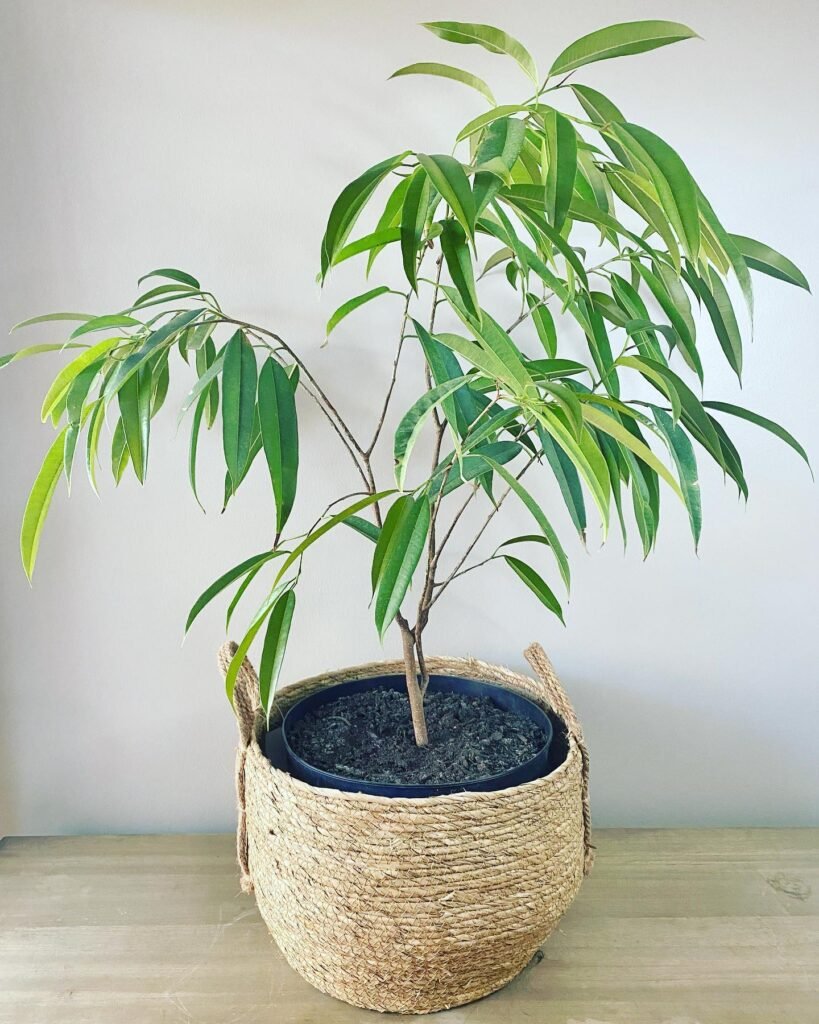

Ficus Alii, also known as the Long Leafed Fig, is a visually appealing indoor plant with distinctive features. Its glossy, elongated leaves taper to a point, lending the plant an elegant and graceful appearance. As Ficus Alii matures, its stems become more prominent, adding to its charm and creating a palm tree-like look. With its ability to grow quite large, Ficus Alii can make a stunning statement in any indoor space.
 The Ficus Alii, also known as the Long Leafed Fig, stands out for its resilience. It adjusts well to various indoor conditions, requiring only moderate light and water. This makes it an excellent choice for those new to indoor gardening.
The Ficus Alii, also known as the Long Leafed Fig, stands out for its resilience. It adjusts well to various indoor conditions, requiring only moderate light and water. This makes it an excellent choice for those new to indoor gardening.
Light Requirements for Ficus Alii
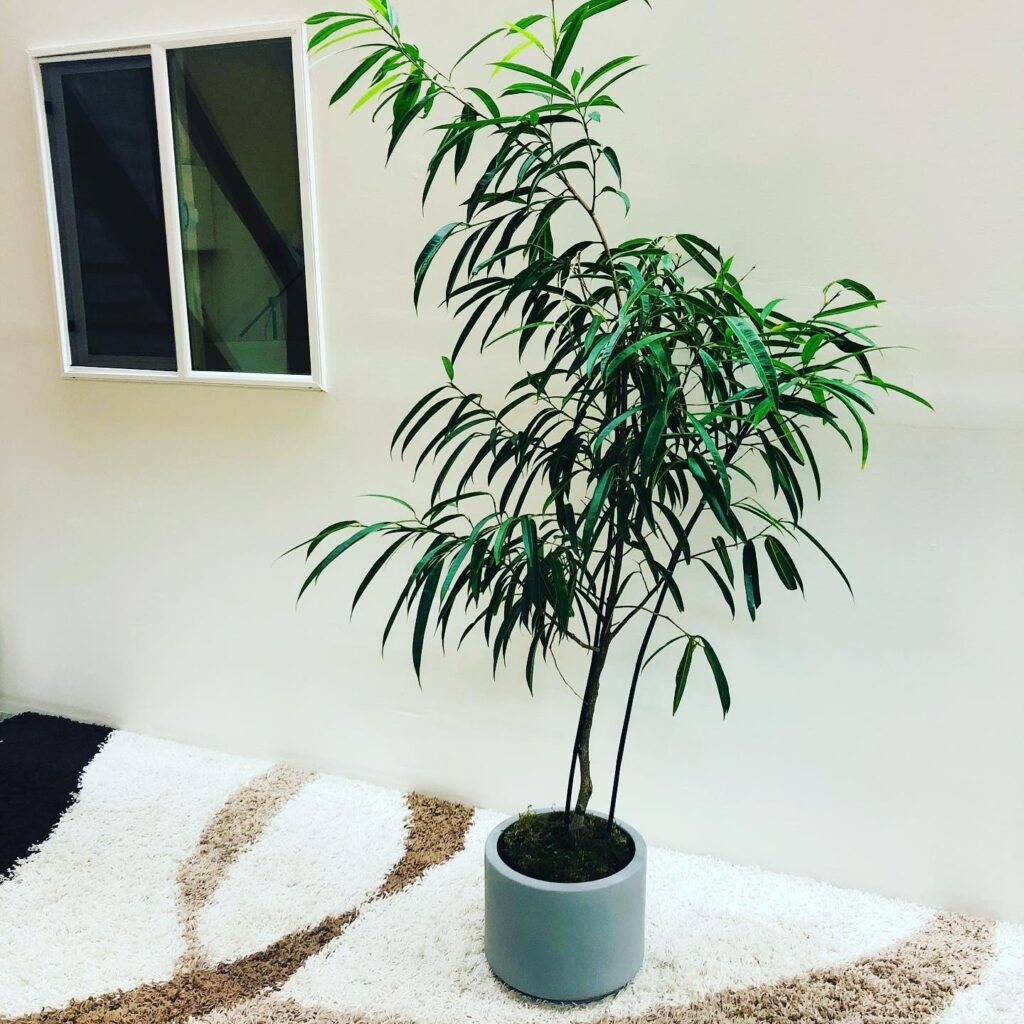

Ficus Alii, also known as the Long Leafed Fig, thrives in bright, indirect light. It can tolerate some shade, but direct sunlight should be avoided as it can scorch the leaves and cause leaf drop. Finding a well-lit spot near a window, preferably an eastern facing one or a few feet away from a southern or western facing window, would be ideal for cultivating Ficus Alii indoors.

Watering Tips for Ficus Alii (Long Leafed Fig)
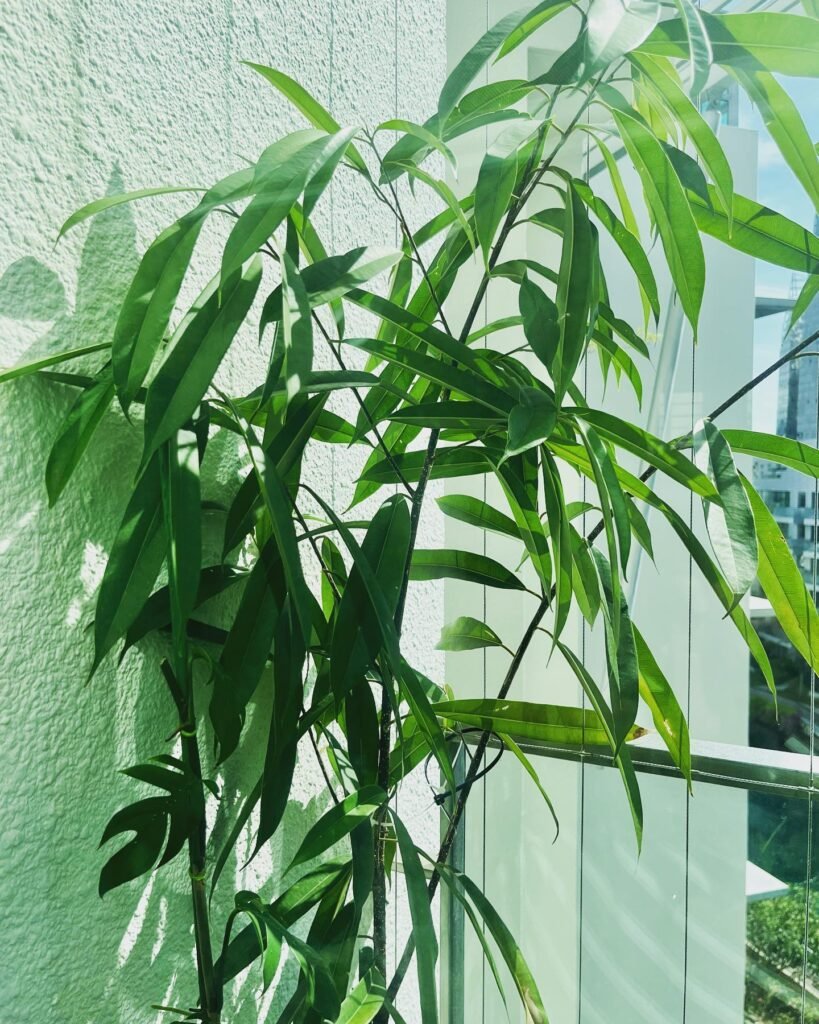
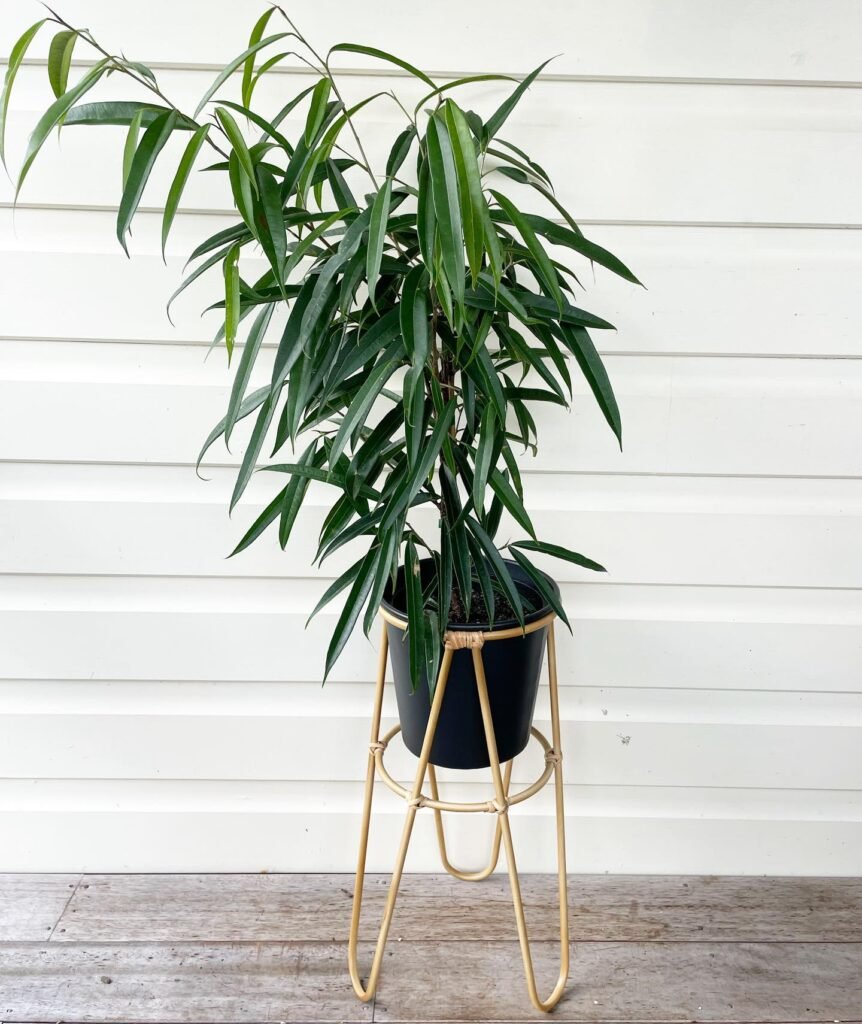
Proper watering is essential for the health and well-being of your Ficus Alii (Long Leafed Fig) plant. To keep your plant thriving, it is important to maintain slightly moist soil at all times. Here are some watering tips to help you care for your Ficus Alii:
- Monitor soil moisture: Check the top inch of the soil regularly. When it starts to become slightly dry, it’s time to water your Ficus Alii. Stick your finger into the soil to test its moisture level.
- Avoid overwatering: Ficus Alii is susceptible to root rot, so it’s important not to overwater the plant. Overwatering can lead to soggy soil, which can cause the roots to suffocate and eventually result in leaf drop.
- Adjust watering during winter: During the winter months, when the plant is experiencing dormancy, reduce the frequency of watering. Since the plant’s growth slows down during this time, it requires less water. Be cautious not to let the soil completely dry out, but maintain a more moderate watering schedule.

Fertilizing and Soil for Ficus Alii (Long Leafed Fig)
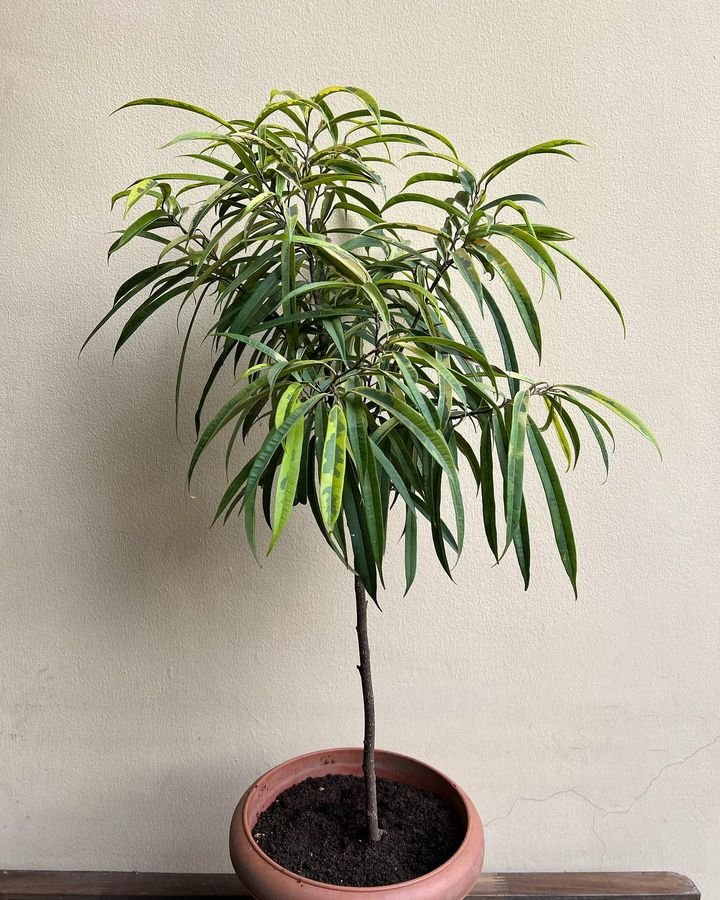

When it comes to fertilizing Ficus Alii, a balanced fertilizer is the way to go. During the growing season, I recommend fertilizing your plant once or twice a month. However, it’s important to use a weak dose to avoid over-fertilization.
Ficus Alii is a relatively easy-going plant when it comes to soil requirements. Most basic potting soils will suffice, but to ensure optimal growth, consider adding sand or grit to the mix. This will improve drainage and aeration, which are essential for the plant’s overall health.
One thing to be cautious of is using soils specifically made for roses and azaleas. These soils tend to be more acidic, which can be detrimental to the roots of your Ficus Alii. Stick to general-purpose potting soils for the best results.

Pruning and Maintenance for Ficus Alii
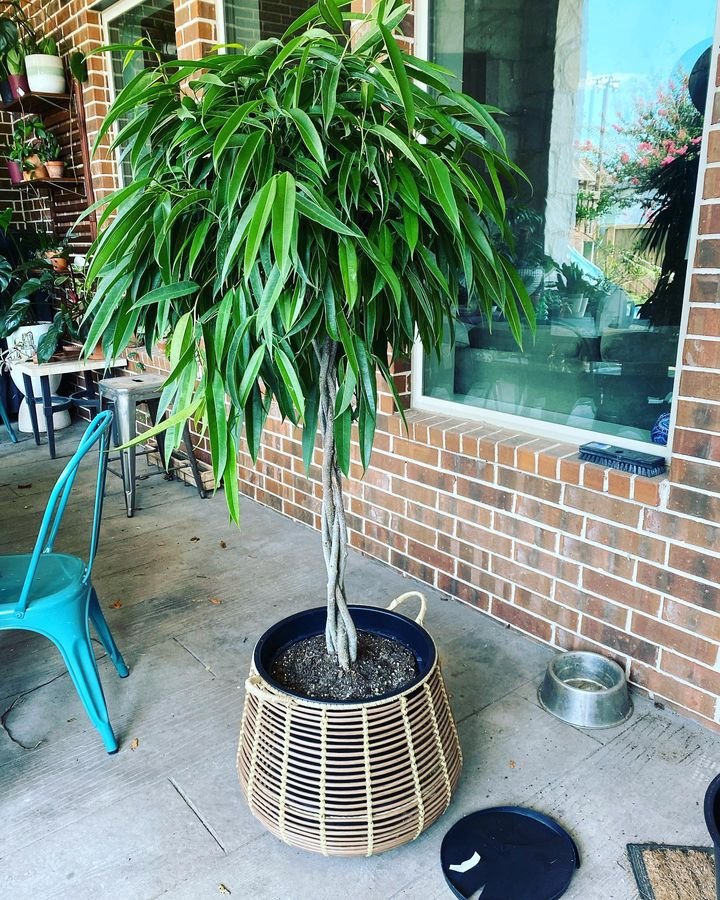

Pruning Ficus Alii is essential to maintain its desired shape and support healthy growth. You have the option to trim the plant to ensure it remains neat and tidy or let it grow naturally, which will create a fuller and more willow-like appearance.
When pruning Ficus Alii, it’s important to be cautious as the cut stems may release sticky latex, which can cause irritation. If the latex comes into contact with your skin, it is recommended to wash your hands thoroughly to prevent any discomfort.
Regularly dusting the leaves is another crucial aspect of Ficus Alii maintenance. This helps keep the plant healthy and promotes efficient photosynthesis, allowing it to thrive in your home environment.

Propagating Ficus Alii (Long Leafed Fig)

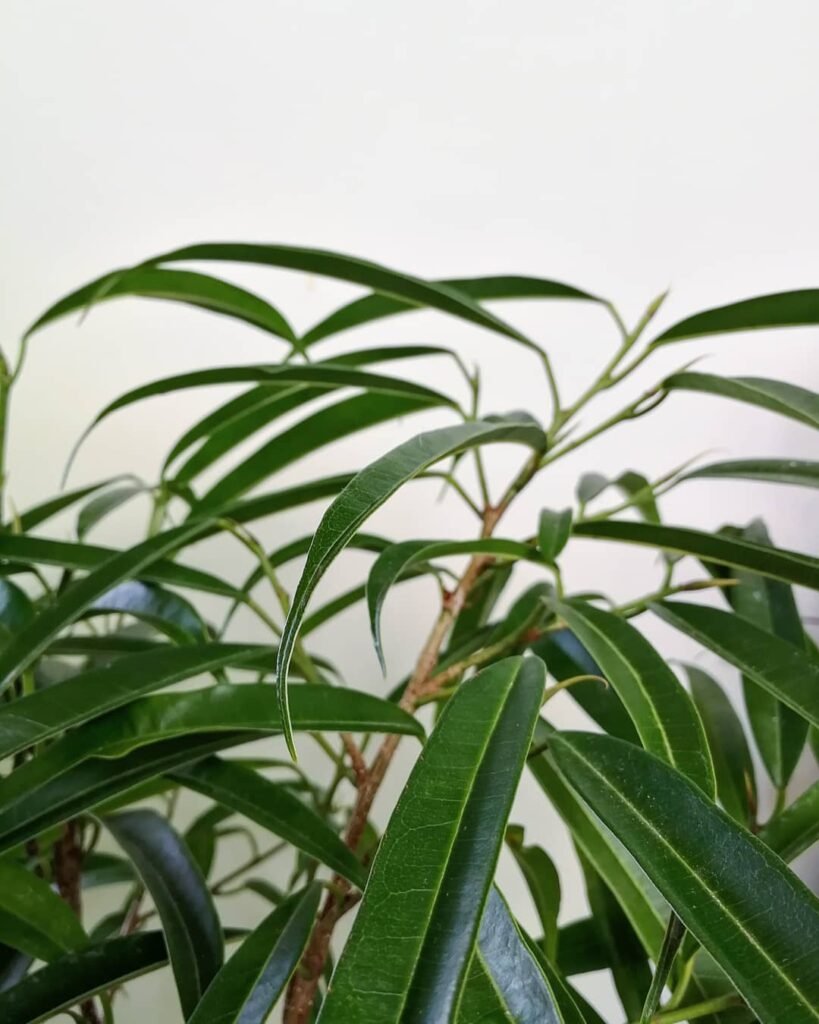
Propagating Ficus Alii can be an exciting and rewarding process, allowing you to expand your collection or share this beautiful plant with others. One of the easiest methods of propagation is through stem cuttings. Follow these steps to successfully propagate your Ficus Alii:
- Select a healthy stem on your Ficus Alii plant that has a few leaves.
- Using clean, sharp secateurs or a knife, make a clean-cut just below a leaf node. A leaf node is where a leaf emerges from the stem.
- Remove any leaves from the lower portion of the cutting, leaving only a few at the top for photosynthesis.
- Fill a container with well-draining soil. A mixture of peat moss, perlite, and sand works well for Ficus Alii.
- Make a small hole in the soil and insert the stem cutting, ensuring that at least one node is below the soil surface.
- Gently press the soil around the cutting to secure it in place.
- Place the container in a warm, bright location with indirect light. Avoid direct sunlight, as it can scorch the delicate cutting.
- Keep the soil consistently moist but not waterlogged. Overwatering can cause the cutting to rot.
- Monitor the cutting regularly and mist it with water to maintain a humid environment.
- After a few weeks, check for signs of root development. Gently tug on the cutting, and if you feel resistance, roots have likely formed.
- Once the roots have developed, you can transfer the young Ficus Alii plant into its permanent pot with well-draining soil.
Tip: If you want to propagate multiple Ficus Alii plants, you can take several stem cuttings and place them in separate containers.

Repotting Tips for Ficus Alii
Proper repotting is an essential part of caring for your Ficus Alii (Long Leafed Fig) plant. Repotting should typically be done every 2-3 years or when the plant outgrows its current pot. Here are some helpful tips to ensure successful repotting:
- Choose the right pot: Select a pot that is 1-2 inches wider than the current one. This will provide enough space for the roots to grow and prevent the plant from becoming rootbound.
- Loosen the soil and roots: Gently loosen the soil and carefully remove the plant from its current pot. Be cautious not to damage the roots. Loosening the roots will encourage new growth and better nutrient absorption in the fresh soil.
- Place in fresh soil: Fill the new pot with fresh, well-draining soil. Position the plant in the center of the pot and add soil around the roots, ensuring they are adequately covered.
- Water thoroughly: After repotting, give the Ficus Alii a thorough watering. This will help settle the soil and provide the plant with the necessary moisture it needs to recover from the transplanting process.
- Allow for adjustment: It is normal for the plant to show some signs of stress after repotting. The Ficus Alii may droop slightly or experience some leaf drop in the first few weeks as it adjusts to its new environment. Be patient and continue providing regular care.
 The Ficus Alii, or Long Leafed Fig, is known for its elegant leaves and air-cleaning benefits. It’s also tougher on pests than other ficus types, offering both style and resilience for indoor spaces.
The Ficus Alii, or Long Leafed Fig, is known for its elegant leaves and air-cleaning benefits. It’s also tougher on pests than other ficus types, offering both style and resilience for indoor spaces.
Common Pests and Diseases of Ficus Alii
Ficus Alii, like any other plant, can be susceptible to certain pests and diseases. Being aware of these common issues and taking the necessary steps to control them is crucial for the health and well-being of your Ficus Alii plant.
One common pest that may affect Ficus Alii is whiteflies. These small, winged insects can cause damage by feeding on the plant’s sap. To control whiteflies, you can spray the plant with water to dislodge them or use a houseplant-friendly insecticide. Regular monitoring and early intervention can help prevent a whitefly infestation from spreading.
Another issue to watch out for is root rot, which can occur if the soil around the Ficus Alii plant becomes overly wet. This can cause the roots to become damaged and lead to leaf drop. To avoid root rot, ensure that the soil drains properly and do not overwater the plant. Let the top inch of soil dry out before watering again, and consider using a well-draining potting mix.
Fungal diseases can also affect Ficus Alii, causing white spots to appear on the stems. These diseases are often triggered by high humidity and poor air circulation. If you notice signs of fungal infection, such as discolored spots, it is important to take action promptly. Pruning affected areas and applying a houseplant-friendly fungicide can help manage the spread of the disease and protect the overall health of the plant.
Remember, prevention is key when it comes to pests and diseases. Regularly inspect your Ficus Alii plant for any signs of trouble, such as discolored leaves, wilting, or unusual spots. Taking immediate action can prevent further damage and help your plant recover quickly.
It is important to note that Ficus Alii is considered toxic to cats, dogs, and other pets. The plant contains certain chemicals that can cause irritation, digestive problems, and allergic reactions in animals if ingested. To ensure the safety of your pets, it is best to keep Ficus Alii out of their reach or avoid having the plant in your home altogether if you have pets. If you suspect your pet has come into contact with Ficus Alii or is displaying any abnormal symptoms, it is recommended to consult a veterinarian for advice.
Additionally, individuals with latex allergies should also exercise caution around Ficus Alii as it may cause allergic reactions. Therefore, it is advisable to wear gloves when handling the plant, especially during pruning or propagation.
Helpful Videos about Ficus Alii (Long Leafed Fig)
In this specially chosen collection, I’ve gathered a set of videos that provide simple guidance on looking after your Ficus Alii, known as the Long Leafed Fig. These resources aim to introduce you to the basic steps for keeping your plant healthy and thriving, perfect for those new to gardening.
- Ficus Alii Plant Care Tips
- Ficus Care Guide | 5 Secrets You Didnt’t Know
FAQ about growing Ficus Alii (Long Leafed Fig)

Interested in caring for your Ficus Alii? Explore my detailed FAQ for essential advice on nurturing your Long Leafed Fig. From the right amount of light, to watering strategies, and overall maintenance, I’ve put together all the information you need to ensure your plant thrives.
Your Ficus Alii thrives in bright, indirect sunlight. Avoid direct sunlight to prevent leaf burn.
Water when the top inch of soil feels dry. Over-watering can lead to root rot, so ensure the pot has good drainage.
Use a well-draining potting mix. A general-purpose indoor plant soil is fine, but you can mix in some perlite for better drainage.
Signs of over-watering include yellowing leaves, wilting, and a soggy soil base. Let the soil dry out more between waterings.
Yes, but only in warm weather and in a spot with indirect light. Acclimatise it slowly to prevent shock.
Prune in spring or early summer to shape the plant or remove any dead leaves and branches with clean, sharp scissors.
Leaf drop can be due to stress from over-watering, under-watering, or a sudden change in its environment.
Yes, fertilise with a balanced liquid fertiliser every 4-6 weeks during the growing season (spring and summer).
Keep an eye out for common pests like spider mites, mealybugs, and aphids. Wipe leaves with a mild soap solution to control them.
It’s a moderately fast grower, especially in the warmer months. Expect several inches of growth each year if it’s happy.
It prefers higher humidity but can tolerate average home conditions. Mist the leaves occasionally to increase humidity.
Keep it in temperatures between 16°C to 24°C. Avoid cold draughts and sudden temperature changes.
Repot every 2-3 years in spring. Choose a pot that’s slightly larger than the current one to give its roots room to grow.
While Ficus Alii prefers bright, indirect light, it can adapt to lower light conditions. However, growth may slow down, and the plant might not thrive as well.
Yes, the Ficus Alii can be toxic when ingested by pets or children. It can cause mouth and stomach irritation, so it’s best to keep it out of reach.
I hope this assists you in mastering the care of your Ficus Alii. Have further queries? Feel free to post them in the comments, and I’ll respond. Remember, we all begin at the starting line, and there’s always something new and exciting to discover about your plants.
Conclusion
Ficus Alii is an exquisite and easy-to-care-for indoor plant that flourishes in UK homes when given the proper attention. By providing bright, indirect light, regular watering, well-draining soil, and occasional pruning, you can ensure the optimal health and growth of your Ficus Alii. Vigilance against common pests and diseases is crucial, and implementing necessary control measures is essential. With dedicated care, your Ficus Alii will thrive, adding a touch of natural beauty to your indoor space.
Bring the beauty of nature indoors with Ficus Alii. This remarkable plant, also known as the long-leafed fig, is an excellent choice for UK homes. Its graceful, slender leaves and palm-like appearance make it a stunning addition to any room. With its low-maintenance nature, Ficus Alii is the ideal houseplant for both experienced plant enthusiasts and beginners alike.
Ficus Alii thrives best in bright, indirect light, so be sure to place it in a well-lit spot, avoiding direct sunlight as it can scorch its leaves. Consistent watering is key, ensuring that the top inch of soil remains slightly moist. Proper drainage and aeration are crucial for Ficus Alii, so use well-draining soil and consider adding sand or grit to the mix. Remember to prune your Ficus Alii to maintain its desired shape and encourage growth.
As with any plant, being proactive against pests and diseases is vital. Keep an eye out for whiteflies and fungal diseases, and promptly address them with appropriate measures. It’s also important to note that while Ficus Alii is a beautiful addition to your home, it can be toxic to cats and dogs, so be mindful of its placement.





